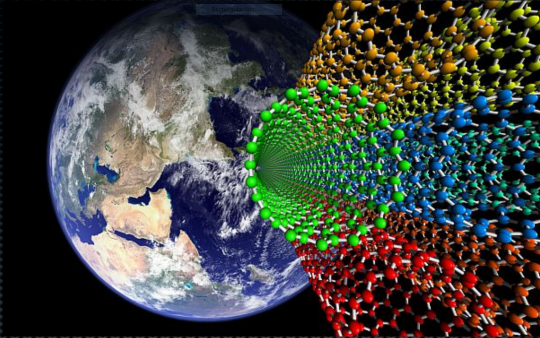Material Selection for the Space Elevator
My Materials Science capstone class was about how to come up with the best material for whatever application. A lot of the time you can simplify what exactly is the purpose of a given component in order to create an single index of material properties that should be maximized, then add a few conditions, like “is this material resistant to saltwater corrosion?”, and the options narrow from literally everything down to a handful.
For example, an aerosol can is effectively a cylindrical pressure vessel, with hemispherical caps. The hemispheres are stronger than the cylinder so, after some perfect-seamless-shape handwaving, you can assume that the failure point will be in the cylindrical portion. Combining the hoop stress in a cylindrical pressure vessel with the stress requires to catastrophically propagate a crack, you can get a relationship between maximum pressure in the container and the container’s material properties, and therefore a term you should maximize to find the best material. (Well, you still have a few more geometric terms in there, but you can read the class paper I wrote for the last steps).
It was really satisfying when the material you thought was the right one, turned out to be what is actually used in practice. Steel and aluminum are great for aerosol cans. As expected.
But what about something that we haven’t built in practice yet? Like the space elevator?

For my final project, I wrote about materials selection for a space elevator pulling significantly from a paper from Jerome Pearson in Acta Astronautica that described the optimal geometry of a space elevator. He claimed that it must be a ribbon– well, more of a strange curved prism– that is wider where there will be the most tensile force: it’s center of mass, geostationary orbit. With that and my extensive (i.e. limited) statics knowledge, I could come up with a materials property index like I used for the aerosol can.
Applying that, I can use the pretty chart below to find that the standout best materials were a handful of composites, particularly PEEK carbon fiber composites. Person (in that great paper), came up with way of finding the ratio of the width of the space elevator at it’s widest and it’s narrowest, depending on the strength and weight of the elevator materials. Even with PEEK/CF, that ratio was 10^15. That’s no good.

What about some super cool materials out there with crazy strength-to-weight ratios, like carbon nanotubes? Plugging them into the system, we get a ratio of 1.008! Incredible! To space we go!
However, the problems with CNT-based space elevation are not insignificant:
- We’ve made CNTs with lengths of a few meters at best, far from geostationary orbit of 35,785 km
- Even if we could make them that long, they’re incredible expensive, and the goal of the space elevator is to make cheap bulk transport to space
- Even if we could make them inexpensively, CNTs are slippery and could never stick together like a rope, which uses friction between strands to prevent unraveling upon failure of any given strand
That’s not to say the space elevator is impossible– CNT manufacturing will get better and cheaper, and we can modify them for improved friction between strands. But I don’t think Elon Musk is worried about a space elevator hurting SpaceX business.

